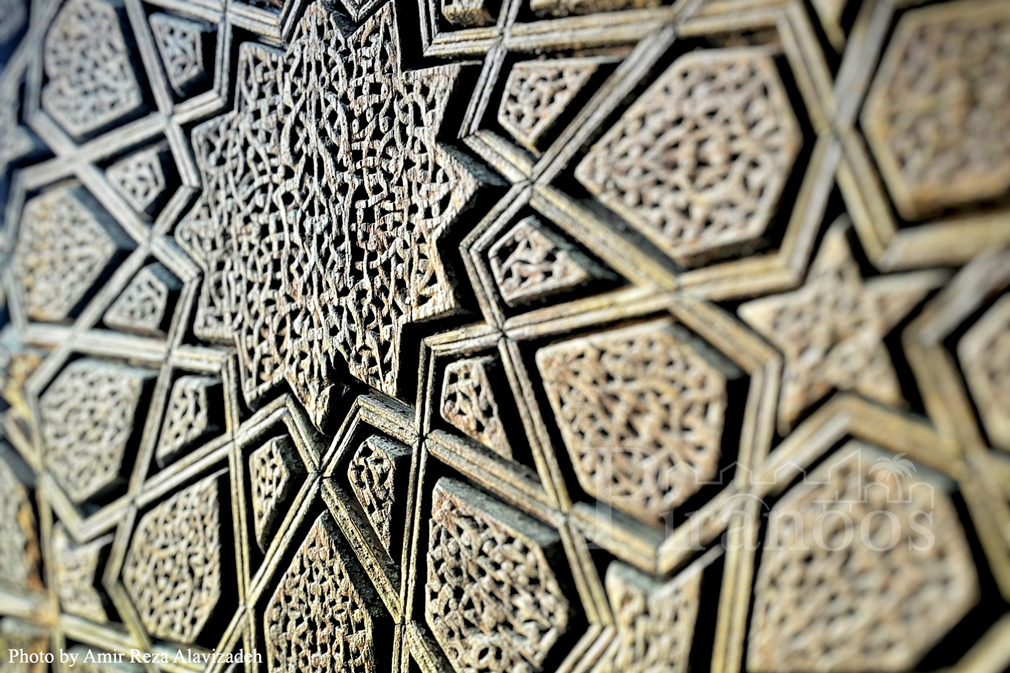Jameh Mosque of Yazd is one of the most beautiful, unique and fascinating tourist attractions of Iran, built in the 6th century AH and its restoration and repair has continued until the last decade. When the architects of the Yazd Mosque decided to build such a monument, they built it in the center of the old city of Yazd and inside the fences of city. The building is 104 meters long and 99 meters wide, leading to seven entrances connected to several alleys and exits.
The monument is mentioned in historical texts and documents with the names such as the Jome Mosque of the city, the Atigh (old) Mosque, the old Jome (Friday) Mosque of Darda and the New Jameh Mosque.
This great monument which was built centuries ago shines through the history of civilization of this land. As it is stated in the historical books:” The mosque was built in the site of an ancient Sassanid fire temple (Atash-kadeh)”.

According to historical documents, the construction and completion of the Yazd Jameh Mosque has been done in over a century in various historical periods, most notably during the Ilkhanid dynasty era, the Safavid era, the Timurid dynasty era, the rule of Al-Muzaffar and the Qajar era. Amr-i Laith Saffari appears to be the first founder of this astonishing work of art. But its most famous builder was Ala-odole Kalanjar, who served as the ruler of Yazd during the years 474-498 AH. During this period, new sections were added to the main building of the Mosque. Unfortunately, there is no trace left of the ancient parts of the mosque, and what is today seen as the building of the Yazd Jameh Mosque has been renovated and built by a number of officials, religious elders and rulers of various eras.

The architecture of Jameh Mosque is in Azeri style. This style is also called Mogul or Iranian-Mogul style. It is also seen in Herat and Bukhara. The architecture of this great mosque is so unique and elegant that many tourists from all over the world would travel to Iran and Yazd to visit this masterpiece of Islamic- Iranian architectural art every year. This marvelous monument, consisting of a high veranda (Iwan), two Shabestans, an amazing dome, two beautiful porches, and a large rectangular courtyard, displays the outstanding architecture and art in Iran.
This mosque is one of the most beautiful mosques of Timurid period. Its astonishing tall entrance with enchanting tiles, minarets and ancient inscriptions makes this monument one of the most beautiful 9th century masterpieces of architecture.

Jameh Mosque of Yazd is known over the world as the mosque with tallest minarets. The height of the mosque’s minarets is 52 meters and its diameter is 8 meters. It’s interesting to know that these two minarets are different. The minaret on the right has two independent stairways. The grandeur of these unique minarets and their amazing tiling is surprising even at the top of the minarets, where the minarets have become narrow.
It may be interesting to hear local stories about these two minarets. It is said that one day an architect master and his apprentice come together to make each of the minarets and compare the results without overseeing each other’s work during the process. At the end, both minarets were constructed perfectly; but the minaret that is built by the apprentice, the one on the right, has two-way stairs while the master’s minaret only has one-way stairs and at the end the dexterous master gets upset about it and throws himself down from the same minaret.

Jameh Mosque of Yazd is known over the world as the mosque with tallest minarets. The height of the mosque’s minarets is 52 meters and its diameter is 8 meters. It’s interesting to know that these two minarets are different. The minaret on the right has two independent stairways. The grandeur of these unique minarets and their amazing tiling is surprising even at the top of the minarets, where the minarets have become narrow.
It may be interesting to hear local stories about these two minarets. It is said that one day an architect master and his apprentice come together to make each of the minarets and compare the results without overseeing each other’s work during the process. At the end, both minarets were constructed perfectly; but the minaret that is built by the apprentice, the one on the right, has two-way stairs while the master’s minaret only has one-way stairs and at the end the dexterous master gets upset about it and throws himself down from the same minaret.
There is also another story about the minarets. Some believe that the master who built the left minaret became ill and died after a few years so another architect began the construction of the new minaret. During this period, with the development of architecture, the construction of two-sided staircases became fashionable and the new architect was able to build the next two-sided minaret, which is why the minarets are different.
But all of these narratives are just local theories and are not authentic. Perhaps the best answer right now is that “no one knows the real reason for this difference